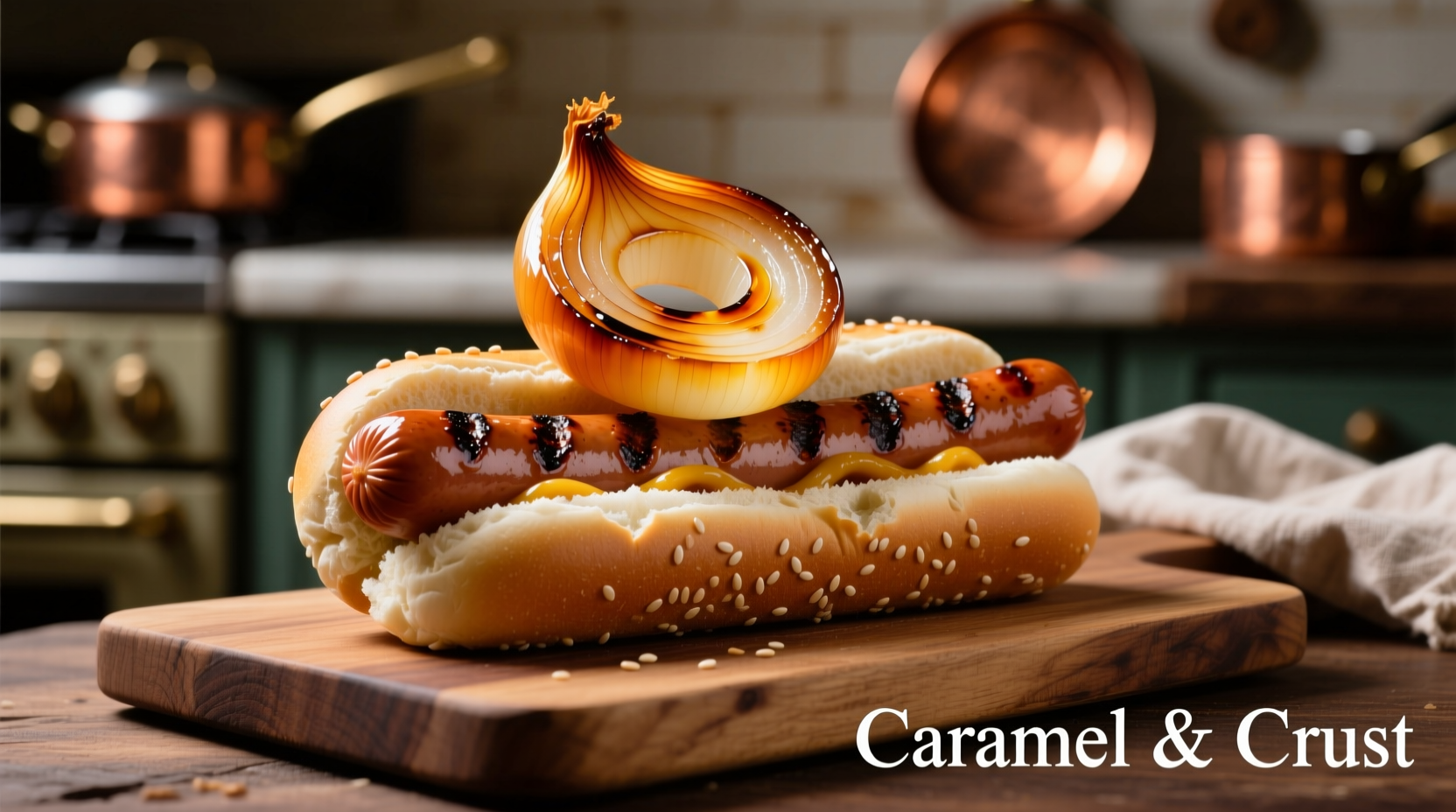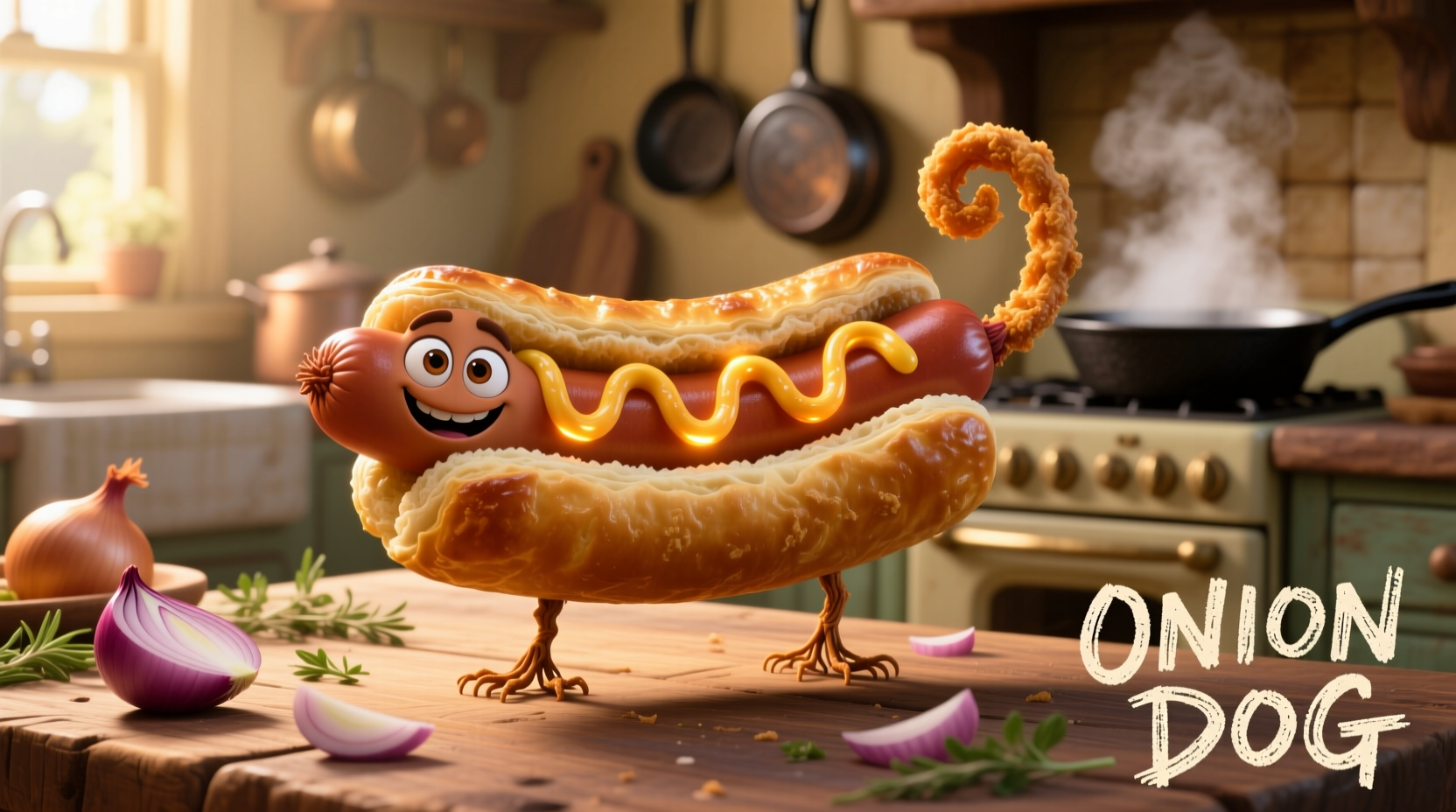An onion dog isn't a breed of dog—it's a classic hot dog preparation featuring perfectly caramelized onions that transform this simple street food into a flavor masterpiece. This guide reveals professional techniques for creating restaurant-quality onion dogs at home, including the science behind caramelization, regional variations, and common mistakes to avoid.
The Essential Onion Dog: More Than Just a Topping
When you order an "onion dog" at a quality hot dog stand, you're getting more than just raw onions on a frank. The magic happens through proper caramelization—a chemical reaction that converts the natural sugars in onions into rich, complex flavors. Unlike quick sautéed onions, true caramelized onions require patience: 30-45 minutes of slow cooking transforms their sharp bite into sweet, jam-like perfection that complements rather than overwhelms the hot dog.
| Onion Preparation Method | Cooking Time | Flavor Profile | Best Hot Dog Pairing |
|---|---|---|---|
| Raw sliced onions | None | Sharp, pungent | Chicago-style |
| Quick-sautéed onions | 5-8 minutes | Mildly sweet, slightly crisp | New York street cart |
| Properly caramelized | 30-45 minutes | Deeply sweet, umami-rich | Gourmet artisanal |
Why Caramelization Makes the Difference
The Maillard reaction and sugar caramelization that occur during slow cooking create over 500 new flavor compounds in onions. According to research from the USDA Food Science Program, properly caramelized onions develop significantly higher concentrations of savory umami compounds compared to quick-cooked versions. This explains why street vendors in cities like Chicago and New York dedicate substantial time to onion preparation—their signature taste depends on this chemical transformation.
Professional Technique for Perfect Caramelized Onions
Follow this chef-approved method for restaurant-quality results:
- Select the right onions: Yellow onions provide the best balance of sugar and pungency. Avoid sweet varieties like Vidalia for caramelizing as they can burn easily.
- Uniform slicing: Cut 2-3 onions into 1/8-inch slices using a mandoline for consistency—uneven pieces cook at different rates.
- Low and slow: Cook over medium-low heat with 1 tablespoon oil and 1 teaspoon butter (the milk solids enhance browning).
- The deglazing secret: Every 5-7 minutes, add 1 tablespoon of water or broth to dissolve fond and prevent burning.
- Patience pays: Stir occasionally but don't rush the process—true caramelization takes 30-45 minutes until onions achieve deep golden-brown color.

Regional Variations Across America
While the basic concept remains consistent, regional interpretations of the onion dog reflect local culinary traditions:
- New York street style: Quick-sautéed onions with a splash of beef broth, served on a steamed natural casing frank
- Chicago red hot: Grilled onions mixed with sport peppers and bright green relish
- Seattle-style: Caramelized onions with cream cheese topping on a split-top bun
- Texas smokehouse: Smoked onions with chipotle seasoning on a jalapeño sausage
Common Mistakes That Ruin Onion Dogs
Avoid these pitfalls that turn potential perfection into disappointment:
- High heat cooking: Causes burning before proper caramelization occurs
- Overcrowding the pan: Creates steam instead of allowing proper browning
- Skipping the deglazing step: Leads to bitter, burnt flavors from accumulated fond
- Using the wrong onion: Sweet onions lack the necessary sugar structure for proper caramelization
- Adding salt too early: Draws out moisture and prolongs cooking time (add after onions have softened)
Serving Your Perfect Onion Dog
For the complete experience, follow these professional presentation tips:
- Use a split-top New England style bun for maximum onion retention
- Toast buns lightly to create a moisture barrier against sogginess
- Place hot dog in bun first, then add onions—this allows heat to meld flavors
- Consider complementary toppings: a touch of mustard cuts through richness, while a sprinkle of fresh herbs adds brightness
- Serve immediately—caramelized onions lose their texture if held too long
Why This Simple Dish Endures
The enduring popularity of the onion dog reflects a fundamental culinary principle: transformation through technique. What begins as a simple street food becomes elevated through the application of basic food science. According to a National Geographic culinary history study, the addition of caramelized onions to hot dogs emerged in early 20th century American street food culture as vendors sought to differentiate their offerings. Today, this preparation remains popular because it demonstrates how minimal ingredients, when properly treated, can create maximum flavor impact—a lesson applicable to all cooking.











 浙公网安备
33010002000092号
浙公网安备
33010002000092号 浙B2-20120091-4
浙B2-20120091-4